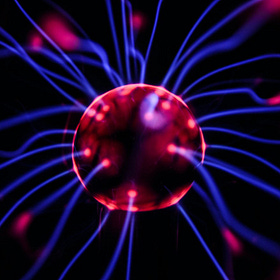The Concept Of Reversibility in Chronic Diseases.
Can these diseases even be reversed?
It’s always fun to play a game of Uno and hit a Reverse on someone. But of course, there exist worse cards such as the dreaded +4 card.
What I want to look at today is the concept of reversibility — especially when people out there have burning questions about whether certain diseases can be reversed.
The Encyclopaedia Britannica defines reversibility as
a characteristic of certain processes (changes of a system from an initial state to a final state spontaneously or as a result of interactions with other systems) that can be reversed, and the system restored to its initial state, without leaving net effects in any of the systems involved.
Simply put, if you, my friend, were to give me $1 at any random point in time and I can give you $1 back, there is no net loss or gain experienced by the both of us. It’s a reversible process. However, if you were to give me $1 and I do not return it to you at all, I have a net gain of $1 and you have a net loss of $1. If you do experience more of these irreversible net losses to me over time, you might not consider me to be your friend any longer.
The reversibility of a chemical reaction is quantified by its Gibbs free energy (ΔG). If there were a known chemical reaction where chemical A is converted to chemical B:
When ΔG = 0, the process is reversible. The rate of A converting to B is equal to the rate of B converting back into A. Let’s call A to B the forward direction and B to A the reverse direction of the reaction.
When ΔG < 0, A converts into B spontaneously and irreversibly. The forward direction is dominant.
When ΔG > 0, B converts into A spontaneously and irreversibly. The reverse direction is dominant.
Thermodynamically, the formation of carbon dioxide from carbon and oxygen has a ΔG value of -394 kJ/mol of carbon dioxide.
Meaning that carbon and oxygen will spontaneously convert into carbon dioxide if given the right conditions — for example, we just need to burn charcoal and we’ll get carbon dioxide.
But getting carbon and oxygen from carbon dioxide will prove to be a much trickier task, and that’s one of the reasons why we have issues with carbon dioxide emissions these days. Because it’s that thermodynamically difficult to chemically convert carbon dioxide into other useful chemicals — though plants can biochemically convert carbon dioxide into energy via photosynthesis.
The Gibbs free energy in the quantification of chronic diseases
It appears as if ΔG < 0 for chronic neurological diseases such as Alzheimer’s and Parkinson’s.
The thing being that there would be a certain tipping point on the reversibility of the amyloid beta plaques that plague Alzheimer’s patients or the α-synuclein aggregates that bother Parkinson’s patients.
Because if we were to consider the reversibility of these plaques forming in our brain, we do need to understand appropriate protein folding and inappropriate protein misfolding.
And of course, protein folding has its own ΔG formula to consider, too.
In uncooked egg whites, we’d see a translucent liquid that contains albumin protein. If we subject these albumins to sufficiently high heat, they’d turn opaque and fluffy as the protein denatures and refolds into a different structure. Under normal conditions, we’d be unable to reverse that folding. However, with sufficient know-how, we can actually invent a device to unboil eggs.
Unfortunately, we can’t do that so easily to the misfolded proteins in our brains. These misfolded proteins will aggregate into those dreaded plaques irreversibly. The misfolding of these proteins will have a ΔG < 0, and we’d actually need to change up the chemical environment in the brain to change up ΔG — but it isn’t easy when we’re talking about stuff like high heat.
As a side note, that’s how high fevers can be that destructive to our brains. Because that additional heat triggers a biochemical cascade of reactions that can force irreversible folding configurations on essential biomolecules in our brain. When these biomolecules lose their function irreversibly, it can be quite damaging to certain neurological functions.
However, our brains do have microglia and astrocyte cells that help to clear out the amyloid beta plaques:
Alzheimer's Disease and the Biochemistry Occurring in the Brain.
Alzheimer’s disease is a problem that many people face as they age, and it is related to an accelerated death of neuron cells in the brain. That is what most of us have already internalised as a fact:
The amyloid beta peptides in our brain can chemically misfold and form aggregate plaques that cannot be cleared by normal means…
But we have the microglia and astrocyte cells that will perform the clearance of these plaques, and therefore maintain a biochemical equilibrium.
When someone has Alzheimer’s, we see the accumulation of these plaques in their brain, which either means that:
Their brains are forming too many of these plaques that the microglia and astrocyte cells cannot deal with, or
The production rate of these plaques are normal, just that the microglia and astrocyte cells cannot deal with these plaques somehow.
Which is similar to what we’d see in the accumulation of cholesterol in our bodies, too:
Cholesterol - Does It Spell Doom Or Is It Even Remotely Useful To The Human Body?
Cholesterol is one of those words that people dread discussing as they grow older. Beyond the obvious implications of heart attacks or strokes, the whole issue behind that C word starts at the doctor’s office.
When a biochemical process is essentially irreversible within our bodies, we’d need the cells in our body to respond appropriately and eliminate those misbehaving miscreants accordingly. That’s our defensive mechanisms right there.
Can a chronic disease be reversed, then?
We wouldn’t be looking at changing up the environmental conditions to favour the backward reaction, that is for sure.
Because while our macrophage cells are likely to form foam cells (and eventually atherosclerotic plaques) as a result of irreversibly consuming oxidised low density lipoproteins, we also do have other macrophage cells that are capable of performing efferocytosis to clear out the growth of the plaque.
Efferocytosis And Its Oft-Unstated Role In Artery Clogging.
The word “efferocytosis” isn’t one that is frequently thrown about these days. Most heart disease patients would not have heard of this word before, because rarely is it (if ever) discussed by their doctors.
And while the amyloid betas are likely to misfold and form plaques in our brains, we have the microglia and astrocyte cells to decompose these plaques and eliminate them from our brains.
In both cases, we’re looking at the elimination performance of the cells in our body.
Unfortunately, it’s more a case of feeding our bodies with the correct things consistently such that the cells in our body can perform the elimination performance appropriately and consistently.
Which is why we rarely see young people getting into trouble with heart attacks and neurodegenerative disorders — most of us don’t have cellular issues with elimination at the start. So even if we’re producing a certain amount of amyloid beta plaques consistently, our brain cells are able to deal with that elimination load.
However, as we age, the performance efficiency of the cells in our body decrease, and even if the elimination load remains the same, the cells may not have the capacity to deal with that load.
And if that happens, we see the irreversible accumulation happening, and the inevitable arises.
Can a chronic disease be reversed, then? Unfortunately, not all can be. But some degenerative diseases can potentially be avoided if we do take proper care of ourselves. But when we’re looking at reversal, the time frame for efferocytosis to cut down plaque size sufficiently may be much longer than the time frame for the plaque to rupture. One might die before being able to sufficiently reverse their problem.
Prevention is better than cure. I wouldn’t want to even get to that stage where my body’s biochemistry degenerates to the point where my cells can’t even take care of the stuff in the body that it should be taking care of, isn’t it?
Do feel free to share this article and hit the “subscribe” button to get more updates about the science concepts in nutrition and health, all deconstructed nicely for your convenient perusal!





